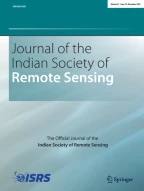Abstract
In this study, we used Landsat-8 imagery to test object- and pixel-based image classification approaches in an urban fringe area. For object-based classification, we applied four machine learning classifiers: decision tree (DT), naive Bayes (NB), random trees (RT), and support vector machine (SVM). For pixel-based classification, we utilized the maximum likelihood classifier (MLC). Specifically, we explored the influence of repeated sampling on classification results with different training sample sizes. We found that (1) except the overall accuracy of NB, those of the other four classifiers increased as the training sample size increased; (2) repeated sampling had a significant effect on classification accuracy, especially for the DT and NB classifiers; and (3) SVM achieved the best classification accuracy. In addition, the performance of the object-based classifiers was superior to that of the pixel-based classifier. The results of this study can provide guidance on the training sample size and classifier selection.
Similar content being viewed by others
References
Breiman, L. (2001). Random forests. Machine Learning, 45(1), 5–32.
Chang, C. C., & Lin, C. J. (2011). LIBSVM: A library for support vector machines. ACM Transactions on Intelligent Systems and Technology, 2(3), 1–27.
Congalton, R. G. (1991). A review of assessing the accuracy of classifications of remotely sensed data. Remote Sensing of Environment, 37, 35–46.
Duro, D. C., Franklin, S. E., & Dubé, M. G. (2012). A comparison of pixel-based and object-based image analysis with selected machine learning algorithms for the classification of agricultural landscapes using SPOT-5 HRG imagery. Remote Sensing of Environment, 118, 259–272.
Fatemeh, T. M., Farhad, S., & Peter, R. (2015). Context aware modification on the object based image analysis. Journal of the Indian Society of Remote Sensing, 43, 709–717.
Foody, G. M., Mathur, A., Sanchez-Hernandez, C., & Boyd, D. S. (2006). Training set size requirements for the classification of a specific class. Remote Sensing of Environment, 104, 1–14.
Gao, Y., Mas, J. F., Maathuis, B. H. P., Zhang, X. M., & Van Dijk, P. M. (2006). Comparison of pixel-based and object-oriented image classification approaches-a case study in a coal fire area, Wuda, Inner Mongolia, China. International Journal of Remote Sensing, 27(18), 4039–4055.
Haralick, R. M., Shanmugam, K., & Dinstein, I. (1973). Textural features for image classification. IEEE Transactions on Systems, Man and Cybernetics, 6, 610–621.
Ippoliti-Ramilo, G. A., Epiphanio, J. C. N., & Shimabukuro, Y. E. (2003). Landsat-5 thematic mapper data for pre-planting crop area evaluation in tropical countries. International Journal of Remote Sensing, 24(7), 1521–1534.
Li, C. C., Wang, J., Wang, L., Hu, L. Y., & Gong, P. (2014). Comparison of classification algorithms and training sample sizes in urban land classification with landsat thematic mapper imagery. Remote Sensing, 6, 964–983.
Ma, L., Cheng, L., Li, M. C., Liu, Y. X., & Ma, X. X. (2015). Training set size, scale, and features in geographic object-based image analysis of very high resolution unmanned aerial vehicle imagery. ISPRS Journal of Photogrammetry and Remote Sensing, 102, 14–27.
Mather, P. M., & Koch, M. (2011). Computer processing of remotely-sensed images: An introduction (4th ed.). Chichester: Wiley.
Myint, S. W., Gober, P., Brazel, A., Grossman-Clarke, S., & Weng, Q. (2011). Per-Pixel vs. object-based classification of urban land cover extraction using high spatial resolution imagery. Remote Sensing of Environment, 115(5), 1145–1161.
Piper, J. (1987). The effect of zero feature correlation assumption on maximum likelihood based classification of chromosomes. Signal Processing, 12, 49–57.
Pu, R. L., Landry, S., & Yu, Q. (2011). Object-based urban detailed land cover classification with high spatial resolution IKONOS imagery. International Journal of Remote Sensing, 32(12), 3285–3308.
Qian, Y. G., Zhou, W. Q., Yan, J. L., Li, W. F., & Han, L. J. (2015). Comparing machine learning classifiers for object-based land cover classification using very high resolution imagery. Remote Sensing, 7, 153–168.
Schneider, A. (2012). Monitoring land cover change in urban and peri-urban areas using dense time stacks of Landsat satellite data and a data mining approach. Remote Sensing of Environment, 124, 689–704.
Trimble eCognition® Developer 9.0 User Guide. (2014a). Munich: Trimble Germany GmbH.
Trimble eCognition® Developer 9.0 Reference Book. (2014b). Munich: Trimble Germany GmbH.
Van Niel, T. G., McVicar, T. R., & Datt, B. (2005). On the relationship between training sample size and data dimensionality: Monte Carlo analysis of broadband multi-temporal classification. Remote Sensing of Environment, 98, 468–480.
Vapnik, V. (2000). The nature of statistical learning theory. New York, NY: Springer.
Wieland, M., & Pittore, M. (2014). Performance evaluation of machine learning algorithms for urban pattern recognition from multi-spectral satellite images. Remote Sensing, 6, 2912–2939.
Witharana, C., & Civco, D. L. (2014). Optimizing multi-resolution segmentation scale using empirical methods: Exploring the sensitivity of the supervised discrepancy measure Euclidean distance 2 (ED2). ISPRS Journal of Photogrammetry and Remote Sensing, 87, 108–121.
Yu, Q., Gong, P., Clinton, N., Biging, G., Kelly, M., & Schirokauer, D. (2006). Object-based detailed vegetation classification with airborne high spatial resolution remote sensing imagery. Photogrammetric Engineering and Remote Sensing, 72, 799–811.
Acknowledgements
The authors wish to thank the editor. The authors also thank Qian Yuguo for his help in operation of eCognition. This work was supported by National Key R&D Program of China [No. 2017YFB0504000, No. 2017YFB0503805]; Special Project on High Resolution of Earth Observation System for Major Function Oriented Zones Planning [No. 00-Y30B14-9001-14/16].
Author information
Authors and Affiliations
Corresponding author
About this article
Cite this article
Shang, M., Wang, SX., Zhou, Y. et al. Effects of Training Samples and Classifiers on Classification of Landsat-8 Imagery. J Indian Soc Remote Sens 46, 1333–1340 (2018). https://doi.org/10.1007/s12524-018-0777-z
Received:
Accepted:
Published:
Issue Date:
DOI: https://doi.org/10.1007/s12524-018-0777-z
